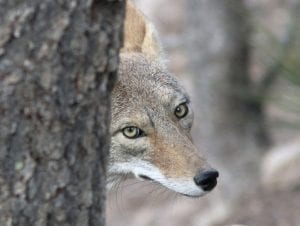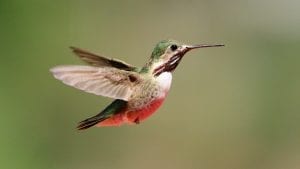Learn more about the wonderful and diverse wildlife that calls the Pajarito Plateau home. No spoilers!? Take the quiz here first!
Celebrate Bear Month with PEEC’s Los Alamos Bear Facts Trivia:
1. What is a black bear’s strongest sense?
Hearing Smelling Sight Touch
(Facts: It is estimated that black bears can smell seven times better than a bloodhound! That’s 2,100 times better than a human)
2. If you encounter a bear, and it has not noticed you, you should…
Take a selfie. Run away screaming. Offer it a snack! Stay calm and back away slowly.
(Facts: Unpleasant sounds make most predators nervous and they move away. Ultimately, being aware of your surroundings when enjoying the outdoors is the best way to keep a healthy coexist with predators.)
3. When was the last documented account of Brown Bear (aka Grizzly bear) in NM?
1912 1931 1942 1980
(Fact: Yes! Grizzlies did once live in NM. The last documented account was in Silver City, NM. Because Grizzlies evolved primarily on the plains where cover is scarce, they tend to stand and fight rather than flee. They are also more predatory and carnivorous than black bears. So with the introduction of livestock from Spanish settlers, Grizzlies were considered a threat to livelihood. The government permitted unlimited hunting, trapping and poisoning of Brown bears to protect the livelihood of ranchers. By 1927 their numbers were too small and productive rates too low for the population to bounce back.)
4. Vegetation makes up _____% of a black bears diet in New Mexico
100% 45% 80% 30%
(Fact: In New Mexico, a black bear’s diet is primarily vegetation, with estimates ranging from 75% to 90%. This includes various plants, fruits, nuts, and berries.)
5. True or False: Black bear need to eat up to 20,000 a day to prepare for hibernation. In the fall bears go into a sort of feeding frenzy called hyperphagia, eating nonstop to prepare for winter.
True. That is 10 times the amount that they would usually consume. In the Fall bears go into a sort of feeding frenzy called hyperphagia, eating nonstop to prepare for winter.
6. How fast can a black bear run?
30 mph 15 mph 25 mph 40 mph
(Fact: Maximum speed for a human is 5-15 mph…this is why running away from a black bear is not wise.)
7. Are black bear solitary animals?
yes no
(Facts: They are generally solitary except for moms with cubs or during mating.)
8. How do black bears maintain muscle mass and bone strength even after months of inactivity in their den?
They stretch regularly. Their bodies recycle waste into protein. They don’t, they lose strength quickly.
(Fact: yep…Look it up.)
9. What unusual reproductive trait allows female black bears to time birth of their cubs with winter denning?
They hibernate while pregnant. They can delay embryo implantation. They give birth early and carry young in a pouch.
(Fact: After mating in summer, a fertilized egg won’t implant in the uterus right away. The embryo floats in a suspended state until fall, and only implants if the mother has gained enough fat to support pregnancy through winter.)
10. What is the term for the state that bears enter during the winter?
Sleep mode Dormancy Brumation Torpor
(Fact: Torpor isn’t as deep as true hibernation, black bears can wake up if they are disturbed. Their body temperature only drops a little, so they can respond quickly if something enters their den. )

Nature Guides
Learn about local mammals, birds, insects, and other critters in PEEC’s Nature Guides.

Interest Groups
Members may join email groups where community members to share wildlife sightings, ask questions, and connect with other nature lovers.
